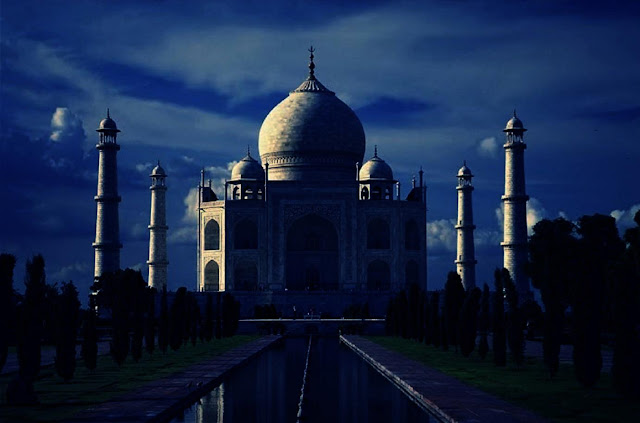After 2000 years... from
ancient to modern world...
Let us introduce you
the new 7 wonders which were chosen by over one hundred million votes from a
selection of 200 existing monuments. On 7 July 2007 in Lisbon, the “New7Wonders
Foundation” drove "the largest poll on record". So, the Great Pyramid
of Giza, the only surviving ancient wonder, passed on the torch to new 7
wonders. Let’s plan our trip like another Phileas Fogg and feel the historical
energy...
1. Great Wall of China, from Dandong to Lop Lake,
China
Built between the 5th
century B.C. and the 16th century, it is a stone-and-earth fortification
created to protect the borders of the Chinese Empire from invading various
nomadic groups of the Eurasian Steppe. Great Wall is the world's longest
manmade structure spanning 21,196 km (13,171 mi). 



A fully functioning luxury
private villa in Mutianyu Village, almost an hour away from Beijing, which offers
you spectacular scenery and a home style feeling whether it is business or
pleasure.
2. Chichen Itza, Yucatán, Mexico
This was one of the largest Maya cities, an active a trading center for cloth, slaves, honey and salt. Flourished from approximately 800 to 1,200 A.D. and acted as the political and economic hub. The Maya name “Chichen Itza” means “At the mouth of the well of the Itza”. The most familiar ruin is El Caracol, a sophisticated astronomical observatory.

Just a few steps away from the Mayan pyramids, you can
have a relaxing time in one of the most special Green Leader hotels. Get
pampered with Maya holistic experiences and ancient healing traditions.

3. Machu Picchu, Cuzco Region, Peru
A15th-century Inca citadel situated on a mountain
ridge 2,430 meters (7,970 ft) above sea level, which is the most familiar icon
of Inca civilization. The site can only be reached by foot, train or helicopter. In the Quechua language, machu means "old"
or "old person", while pikchu means "peak; mountain or
prominence with a broad base that ends in sharp peaks", hence the name of
the site means "old peak".
Sumaq Machu Picchu Hotel
Under the symbolic concept of the Andean cross (chakana),
the four plants of this luxury hotel have been represented by the 4 natural
elements: Air, fire, earth, and water. Enjoy the comfort of a place where you
can live and feel the Incan culture.
4. Petra, Ma’an Governorate, Jordan
This symbol of Jordan, known as Raqmu, was the capital
of the Nabataean empire of King Aretas IV and likely existed in its prime from
9 B.C. to A.D. 40. The city is famous for its rock-cut architecture and
water conduit system. Another name for Petra is the Rose City due to the color of
the stone out of which it is carved.
This 5-star hotel features an exciting combination of
natural stone, handcrafted wood and Middle Eastern fabrics and textures. It
offers you a wonderful atmosphere with excellent service for a unique luxury
holiday.
3. Christ the Redeemer, Rio de Janeiro, Brazil
The Art Deco-style Christ the Redeemer statue has been
looming over the Brazilians from upon Corcovado mountain in an awe-inspiring
state of eternal blessing since 1931. The statue is 30 meters
(98 ft) tall, not including its 8-metre (26 ft) pedestal, and its arms stretch
28 meters (92 ft) wide.
A symbol of Christianity across
the world.
This glamorous landmark is pre-eminent among the best
hotels in Rio de Janeiro. It’s a great location to people watch and take in the
Carioca way of life. It provides you with impeccable service, excellent
gastronomy and luxurious accommodations.
2. The Colosseum, Rome, Italy
Also known as the Flavian Amphitheatre, it was built of
concrete and sand and dating between A.D. 70 and 80 A.D. This is the largest
amphitheatre ever and it was in use for some 500 years. The elliptical structure
sat nearly 50,000 spectators, who gathered to watch the gladiatorial events as
well as other public spectacles, including battle reenactments, animal hunts
and executions.
Palazzo Manfredi
A 17th century hunting lodge makes its own history as a boutique hotel and invites you to feel its modern and eclectic atmosphere, with classical undertones — a celebration of Italian design. A Roman luxury at your service.
1. Taj Mahal, Agra, India
This ivory-white marble mausoleum on the south bank of the Yamuna river was commissioned in 1632 by the Mughal emperor, Shah Jahan, to house the tomb of his favourite wife, Mumtaz Mahal. Completed in 1653, this “tear-drop on the cheek of time” represents a number of architectural styles, including Persian, Islamic, Turkish and Indian.
Only 600 meters from the iconic Taj Mahal, relive the
era of emperors and princely kingdoms in hotel grounds adorned with ornate
fountains, reflection pools, Mughal style minarets and charming pavilions.
Enjoy a truly unforgettable experience.

























No comments:
Post a Comment